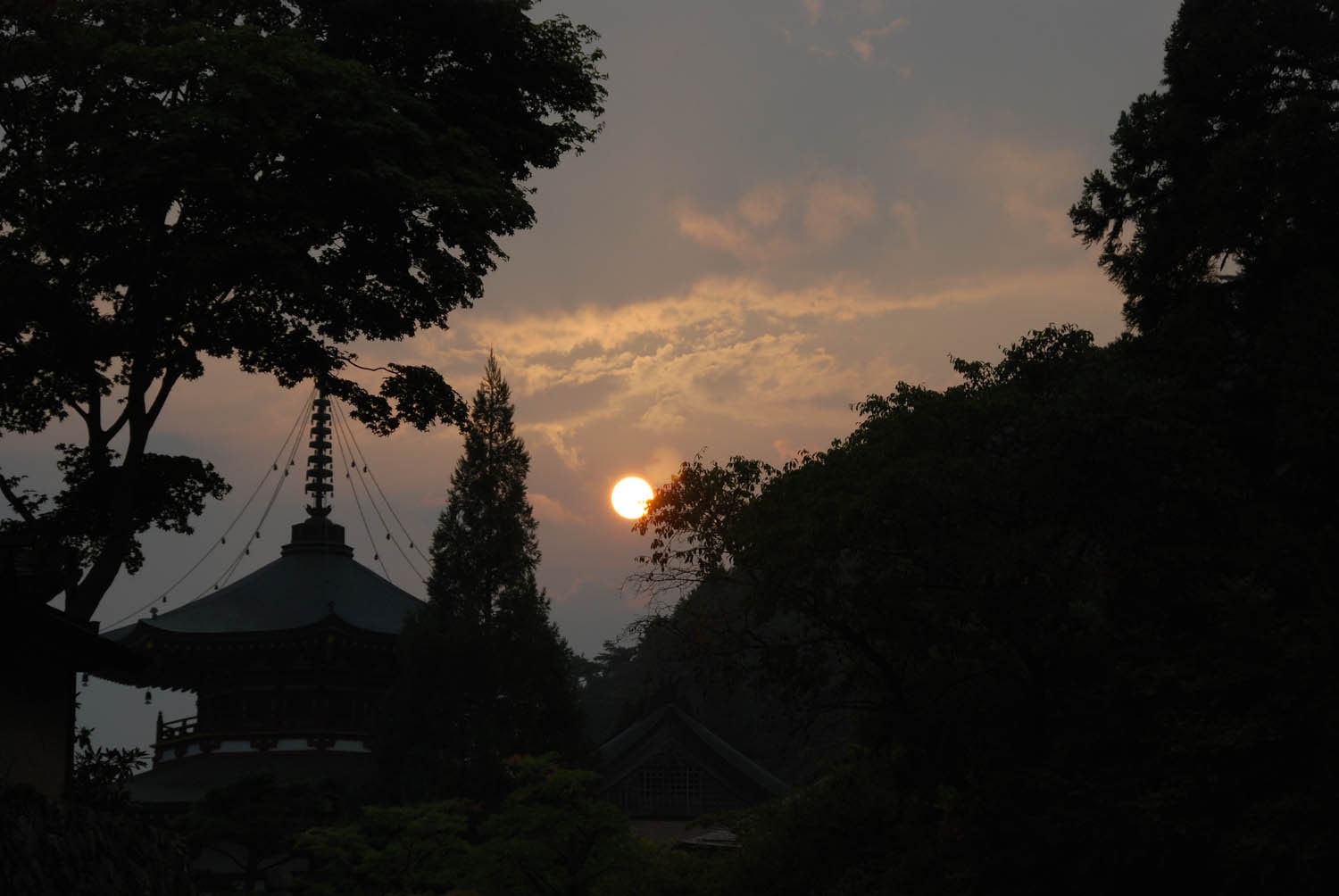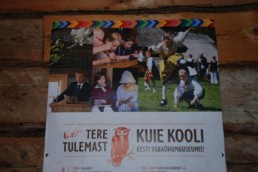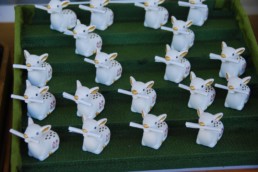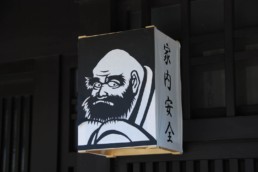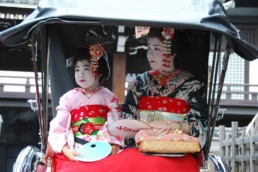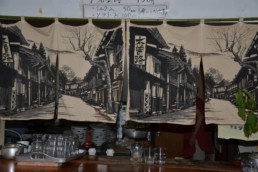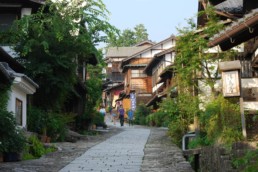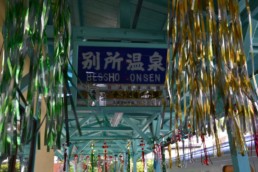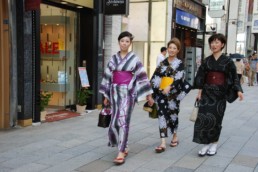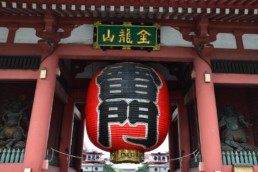To get to Mount Koya from Kyoto, we take the Shinkansen to Osaka. From there, we will take another train, then a cable car up the mountain, and finally a bus….We look forward to this journey which promises to be quite interesting.
Koya-San, as the Japanese refer to Mount Koya, is situated at an altitude of 900 meters. It counts 120 Buddhist temples and is a very important pilgrimage destination. Mount Koya is surrounded by two concentric circles each made of 8 hills, which the ancestors pretended was in the shape of a lotus flower. The 1st monastery was built in the 9th century. In 816, Kûkai, the founder of the Shingon Buddhist sect, was granted by Emperor Saga the permission to establish a religious community atop Mount Koya. Following the death of Kûkai, Shimmen became his successor. Koya-San will become over the following years a very important center for esoteric Buddhism, thanks to the protection and generous grants from emperors and daimyos. However the monks from the Shingon sect and the rival Tendai sect fight each other violently, and many buildings are burnt down. In 1581, Koya-San must surrender to the authority of General Oda Nobumaga who is unifying the country by force.
Today, Koya-San is still one of the most important and revered centers of Japanese Buddhism.
We have chosen to stay at the Fudo-in temple, which is located near the famous Okunoin cemetery of Koya-San. Monks welcome us and explain to us the rules and workings of the temple: shared bathrooms (men and women separated, needless to say, but there is no bathroom in the bedrooms), diner at precisely 6:00 pm, morning prayer at 6:30 am before breakfast. We decide indeed to attend the prayer the next morning.
A view of the buildings and inner gardens.
It is lunch time, and the journey from Kyoto has made us hungry. In a small supermarket, we buy a mixed bag of food, rice cakes, small sandwiches, and some fruit, which will make a nice picnic.
We begin our visit of the Koya-San temples with the Konpon Daito pagoda which dates back to the 12th century and is located inside the sacred Danjo Garan complex. Along with Okunoin, Danjo Garan is the most important site in Koya-San, with about twenty pavilions and pagodas gathered within the site. Inside the 49-meter-high Konpon Daito pagoda, a large statue of Buddha Amida stands still, surrounded by sturdy pillars decorated with Buddhist deities.
We continue with a visit of the Kongôbu-ji temple, the historical headquarters of the Shingon Buddhist sect. The temple was built in 1593 by Shogun Hideyoshi in memory of his late mother. It is a large wooden building with many rooms. On the sliding doors and partitions, you can admire incredible paintings in the traditional Japanese style, inspired by the seasons or representing animals. Taking picture is forbidden to protect the invaluable paintings, but we manage to take some pictures discreetly, without using the flashlight of course so as not to damage the art.
A little bit further, we settle down on the tatamis of a large room where we are offered some green tea and Japanese cakes. We admire the Banryû-tei stone garden, which is the largest in Japan.
We now head for the Tokugawa mausoleum which was built by the 3rd shogun of the dynasty, Lemitsu.
We are caught by a sudden storm, our first during this trip. It is raining, but the temperature is warm. We are alone and, waiting for the rain to stop, we admire the intricate woodwork with golden leafs of the building.
Diner time at 6:00 pm is getting close, and we decide to walk to the Okunoin cemetery, an absolute must-see in Koya-San. We get a little bit lost on the way because our local map is a somewhat of a challenge to follow accurately! Haphazardly we encounter an old lady with her grandson on their way to buy grocery in the town. The grandmother pulls the famous trolley described by Florent Chavouet in his illustrated book ‘’Manabé Shima’’ which I have already mentioned. It is exactly the ‘’grandma-mobile’’ or the ‘’grandmother’s trolley’’ displayed on page 59. This trolley is used for all sort of purposes: an ambulatory support, a seat, a bag to carry grocery, and what have you. An indispensable tool for grandma. I should have taken a picture!!!
The Okunoin cemetery is an impressive site. The atmosphere is mysterious, mystical. The place is very quiet, almost silent, and is conducive to spiritual reverie. The cemetery goes back to the 11th or 12th century, and there are about 200,000 tombstones, of samurais of course, but also of common people. The statues in carved stone with small red aprons are meant to thank for protection granted to babies and children. The walk stretches over 2 km in a forest of century-old pine and cedar trees. There are also many stone lanterns, like the ones you can find in sanctuaries. To fully experience the site, it is probably best to come at dawn.
Koya-San is just an exceptional place! There is so much to see and experience, and so much to feed both the mind and the spirit. We spend only 2 days here, but wish we could stay much longer.
It is now time to head back to the temple for diner. We do not want to be late! A friendly monk welcomes us and takes us to the dining room where the other guests are already set and waiting. We are the last ones….A truly delicious vegetarian meal awaits us, served in a series of small servings. Subtly-spiced baked potatoes; exquisite grilled vegetables; tofu and soup; vegetable tempuras; tiny dishes of seasoned green salad; bowls of perfectly-cooked rice. We are hungry, and this meal, prepared and served by the monks with friendliness and discretion, is simply a treat.
In Koya-San, the cooking has been fully vegetarian since the 12th century. It was adopted because the monks must abide by a strict rule of total respect for all animal life. Vegetarian cooking in Koya-San has thus evolved and improved over the centuries, and it has become so refined, subtle, and delicious.
Fully satisfied with this fabulous meal, we head for the common bathroom for a shower followed by a hot bath. We spend a quiet evening in our room, sorting out the photos of the day and writing up our travelling diaries.
Next day, we wake up early at 6:30 am for the morning prayer. We are atheists, firmly so. Yet we are respectful of all sorts of religious beliefs, provided they are grounded in tolerance, free thinking, and open-mindedness. Having travelled so much throughout Asia, we are interested in the Buddhist cult. This morning, we seat respectfully and wait for the prayer to start. As expected, we do not understand a thing as the monks recite the mantras in a deep, monotone voice. But we are touched by the authenticity of the moment. It is a strange feeling. As it happens, we take our turn, get up and reproduce the gestures of the Japanese people attending the service as they pay their respect. It just feels like the natural, genuine thing to do.
Once the morning prayer is finished, we are led to a small room, just for the five of us, where we will have breakfast. It is a vegetarian breakfast, needless to say. The room is plain and humble, yet comfortable. We enjoy our Koya-San-ese breakfast, and wish we could say a lot longer in fabulous Koya-San.




















